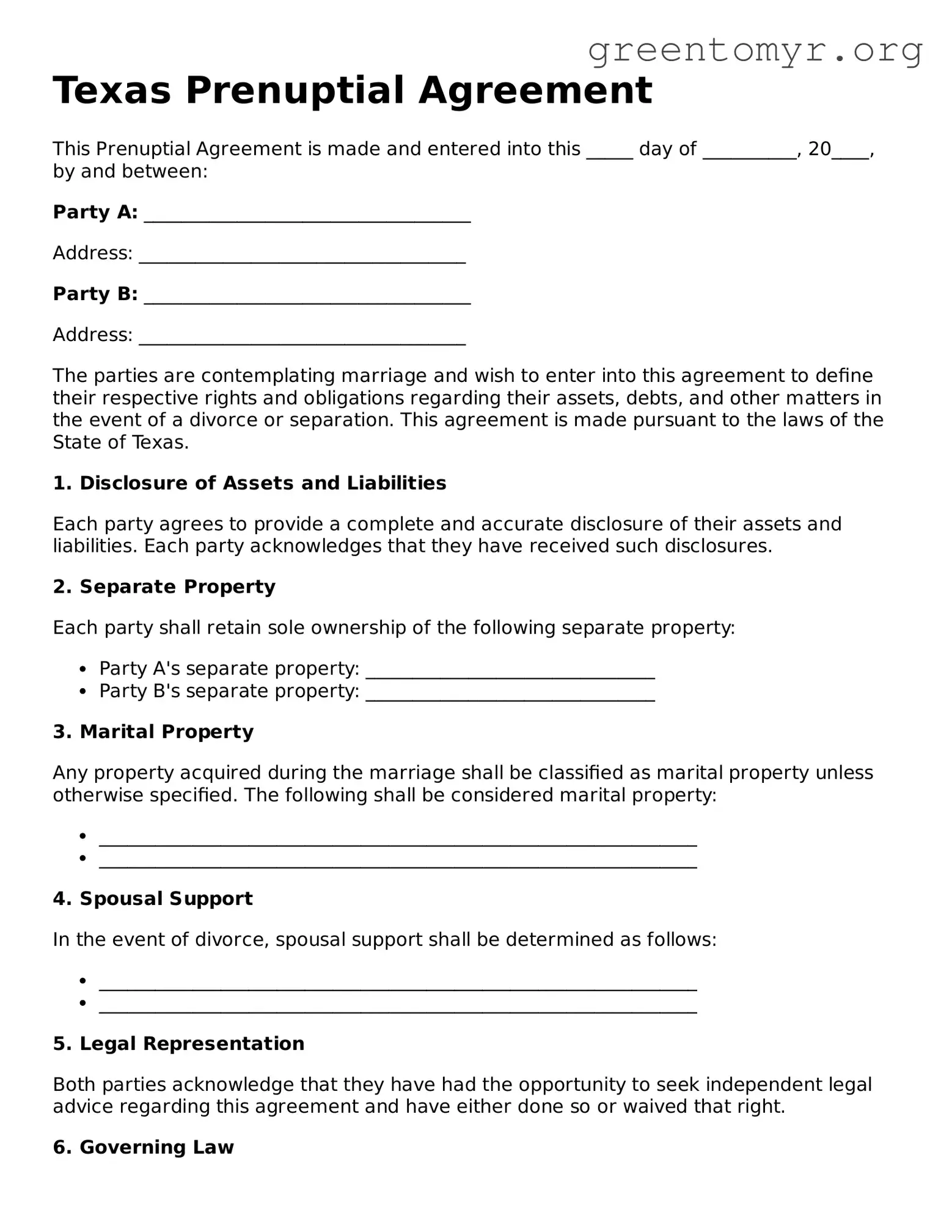Texas Prenuptial Agreement
This Prenuptial Agreement is made and entered into this _____ day of __________, 20____, by and between:
Party A: ___________________________________
Address: ___________________________________
Party B: ___________________________________
Address: ___________________________________
The parties are contemplating marriage and wish to enter into this agreement to define their respective rights and obligations regarding their assets, debts, and other matters in the event of a divorce or separation. This agreement is made pursuant to the laws of the State of Texas.
1. Disclosure of Assets and Liabilities
Each party agrees to provide a complete and accurate disclosure of their assets and liabilities. Each party acknowledges that they have received such disclosures.
2. Separate Property
Each party shall retain sole ownership of the following separate property:
- Party A's separate property: _______________________________
- Party B's separate property: _______________________________
3. Marital Property
Any property acquired during the marriage shall be classified as marital property unless otherwise specified. The following shall be considered marital property:
- ________________________________________________________________
- ________________________________________________________________
4. Spousal Support
In the event of divorce, spousal support shall be determined as follows:
- ________________________________________________________________
- ________________________________________________________________
5. Legal Representation
Both parties acknowledge that they have had the opportunity to seek independent legal advice regarding this agreement and have either done so or waived that right.
6. Governing Law
This agreement shall be governed by the laws of the State of Texas.
7. Binding Effect
This agreement shall be binding upon both parties and their respective heirs, assigns, and successors.
IN WITNESS WHEREOF, the parties have executed this Prenuptial Agreement as of the day and year first above written.
Party A Signature: ________________________________ Date: ____________
Party B Signature: ________________________________ Date: ____________
Witness Signature: __________________________________ Date: ____________
Witness Signature: __________________________________ Date: ____________
